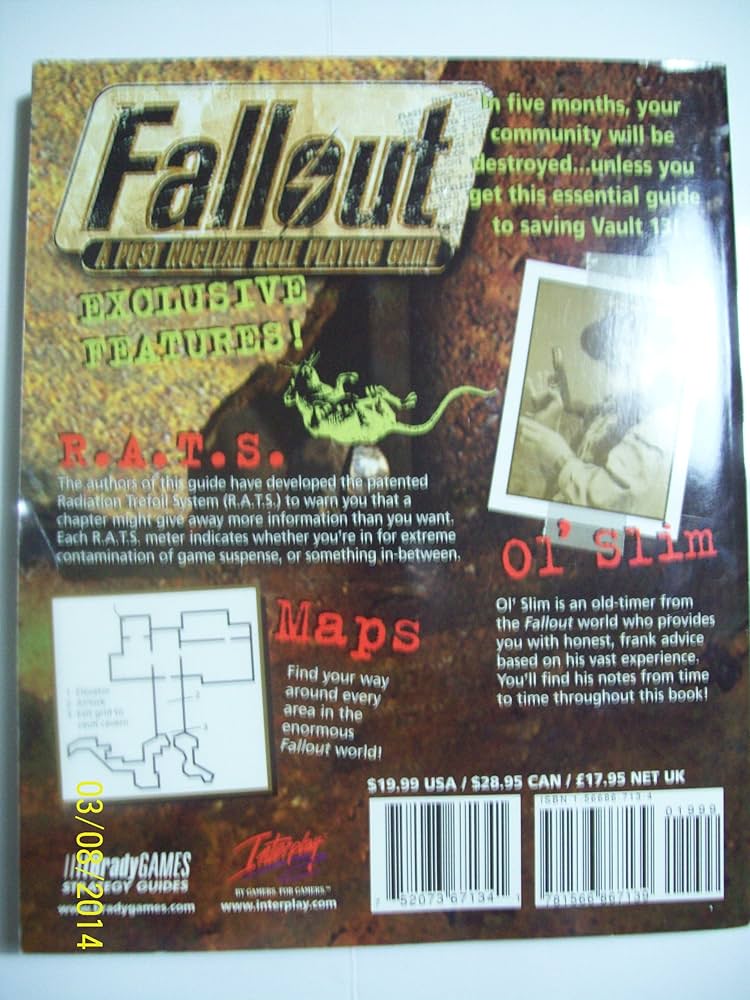
Your Guide to Fallout Vaults

# Your Guide to Fallout Vaults
The Fallout series, developed primarily by Bethesda Game Studios, is renowned for its post-apocalyptic setting and intricate lore. A key element of this universe is the Vaults—underground bunkers designed to protect humanity from nuclear devastation. But the truth behind these institutions is far more complex and often darker than mere shelters. Here is your comprehensive guide to understanding Fallout Vaults.
## The Origins of the Vaults
In the world of Fallout, the United States, anticipating the impending nuclear war, contracted Vault-Tec Corporation to build a series of underground Vaults to safeguard its citizens. These Vaults were marketed to the public as secure refuges, capable of supporting life until it was safe to return to the surface. However, beneath this façade of protection lay a series of experiments intended to study human behavior under different conditions.
## Structure and Design
Typically composed of durable steel and concrete, the Vaults are equipped with life-support systems, living quarters, laboratories, and recreational facilities. Each Vault is self-sufficient, designed to operate independently with its own water, power, and food supplies, often using hydroponics and recycling systems to sustain residents.
## The Experiments
While the public was led to believe that these Vaults were meant to provide safety, Vault-Tec had an ulterior motive: social experimentation. Each Vault, save for a few control Vaults, was subject to unique and often morally questionable experiments, such as:
– **Vault 11:** Residents were required to sacrifice one person annually to avoid everyone supposedly being killed.
– **Vault 12:** Deliberately designed with a malfunctioning door seal, this Vault eventually led to the creation of the first Ghouls.
– **Vault 101:** Never intended to open, it was designed to explore the effects of prolonged isolation.
These experiments were intended to test varying aspects of human psychology and sociology, potentially benefiting post-war society.
## Life in the Vault
Life inside a Vault varied greatly depending on the nature of the experiment. Generally, residents enjoyed a semblance of pre-war American life with full amenities, entertainment, and work. However, the artificial setting and experiments often led to unforeseen psychological effects and societal breakdowns.
## Fallout from the Experiments
Many Vaults faced severe consequences due to their experimental nature. Some experiments led to complete societal collapse within the Vault, while others caused physical mutations or psychological torment to the inhabitants. The mythology surrounding Vaults continues to intrigue players, offering a rich tapestry of human resilience and ethical questions.
## Iconic Vaults in Fallout Games
Each Fallout game often explores different Vaults, providing players with a glimpse into the varied outcomes of these experiments:
– **Fallout 3’s Vault 101:** A closed society unprepared for life outside that collapses under its own weight.
– **Fallout: New Vegas’ Vault 22:** Overrun by dangerous plant life due to a botched attempt to create sustainable food.
– **Fallout 4’s Vault 111:** Known for its cryogenic preservation experiment.
Each story adds depth to the franchise and allows players to consider the consequences of manipulation and control masked as protection.
## Conclusion
The concept of Vaults in the Fallout series highlights the potential pitfalls of monopolistic control and manipulation under the guise of protection. These intricate, self-contained societies provide a backdrop for exploring complex themes such as isolation, societal collapse, and the darker side of human experimentation. Whether you’re a seasoned player or new to the Fallout universe, the Vaults offer a fascinating lens through which to view post-apocalyptic survival and ethics.